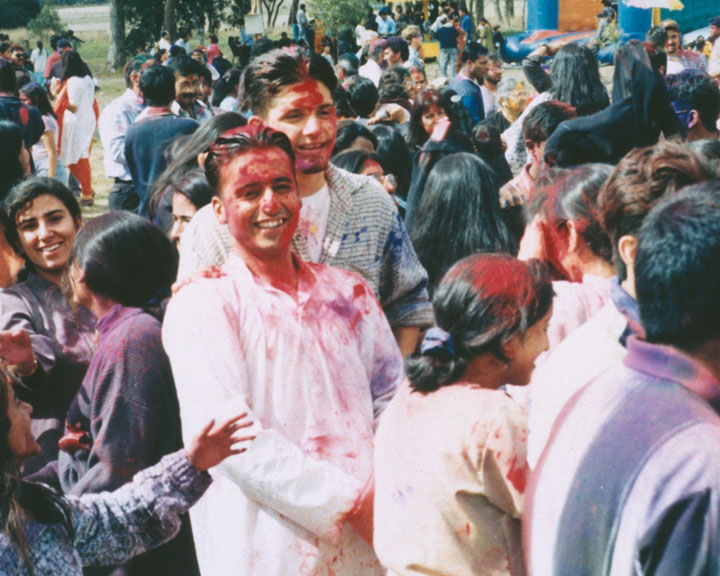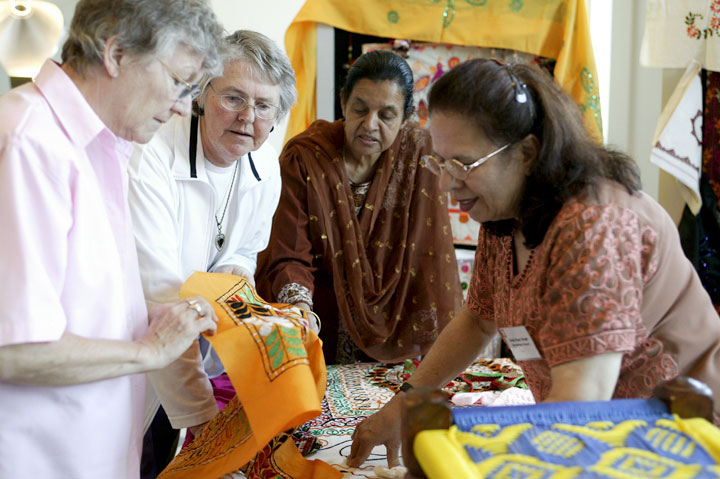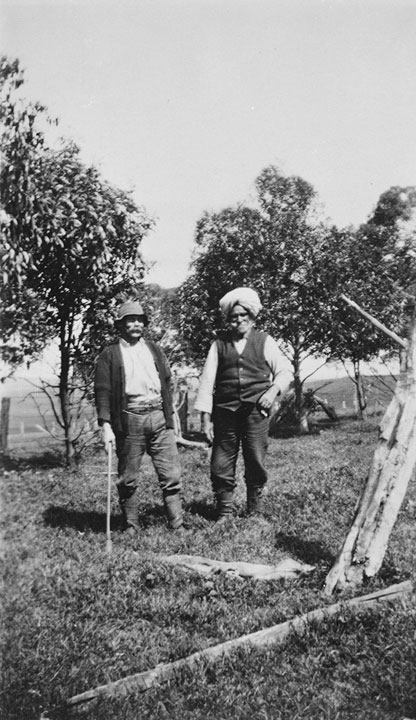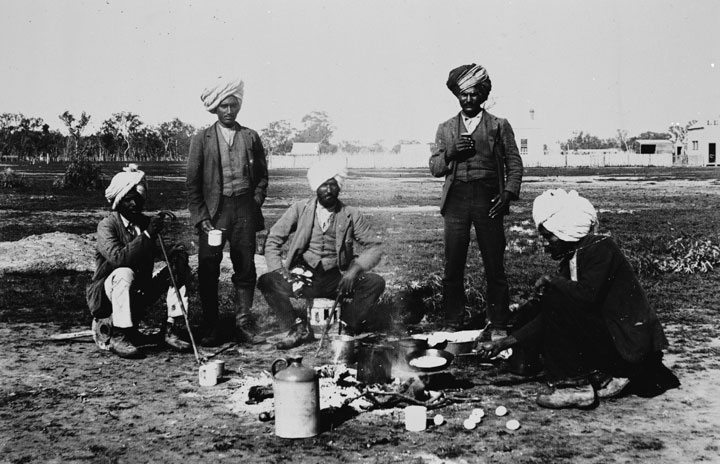Immigration History from India (Hindi) to Victoria
19वीं शताब्दी के प्रारंभ में ऑस्ट्रेलिया आये भारतीयों में से कुछ को, तत्कालीन ब्रिटिश सरकार ने कैदियों के रूप में यहाँ भेजा था. अन्य लोग, भारत में रह रहे ब्रिटिश अधिकारियों के साथ श्रमिकों के रूप में यहाँ आये। इनमें वो 14 सेवक भी शामिल थे जिन्हें एक धनवान जमींदार मेजर Alexander Davidson सन् 1843 में विक्टोरिया लाये, परंतु साधारण जनता बहुत सारे भारतीय श्रमिकों की भर्ती से सहमत नहीं थी।
19वीं शताब्दी के अन्त तक काम की तलाश में कुछ और भारतीय यहाँ आये, जिनमें अधिकतर सँख्या कृषि मजदूरों एवम् फेरी वालों की थी और क्योंकि भारत उस समय ब्रिटेन के आधीन था, इसलिये यहाँ के लोगों ने उन्हें स्वीकार कर लिया। सन् 1901 में विक्टोरिया में भारत में जन्में लोगों की सँख्या 1,800 थी। इसी वर्ष श्वेत अॉस्ट्रेलिया नीति अपनाई गई, जिससे Anglo-Celtic लोगों के अलावा अन्य भारतीयों के यहाँ आने पर पाबन्दी लग गई।
सन् 1947 में जब भारत को अंग्रेजी राज से स्वतंत्रता मिली तो भारी सँख्या में भारत में जन्मे ब्रिटिश नागरिकों के साथ Anglo-Indians भी ऑस्ट्रेलिया में आकर बस गए। सन् 1954 तक भारत में जन्में विक्टोरिया वासियों की संख्या 3,000 से भी ऊपर पहुँच गई, इनमें से अधिकांश लोग ईसाई एवम् Anglo-Celtic थे। सन् 1966 से अॉस्ट्रेलिया के कड़े अप्रवास ( Immigration) नियमों में कुछ ढील दिये जाने के बाद, विभिन्न क्षेत्रों में काम करने वाले भारतीय जैसे डॉक्टर्स, अध्यापक व इंजीनियर्स आदि यहाँ आने लगे। सन् 2011 में भारत में जन्मे विक्टोरियावासियों की सँख्या 111,787 दर्ज की गयी।
सन् 1973 में श्वेत ऑस्ट्रेलिया पॉलिसी के समाप्त होने के बाद विक्टोरिया में भारत में जन्मे लोगों की सँख्या में उल्लेखनीय रूप से वृद्धि हुई और 1970 के दशक के अन्त तक यहाँ के निवासियों में उनकी सँख्या लगभग 12,000 हो गई। 1980 के दशक के प्रारंभिक काल में विक्टोरिया में, रोजगार के अवसर बढने के साथ ही, कम्प्यूटर व तकनीक के क्षेत्र में कुशल भारतीयों की सँख्या भी बढने लगी और इस सहस्त्राब्दी के प्रारंभ में भारत में जन्में विक्टोरियावासियों की सँख्या 30,000 से भी अधिक हो गई।
आज यहाँ के भारतीय समाज में विभिन्न सँस्कृतियों वाले लोग शामिल हैं, जिनमें से 36% ईसाई, 63% हिन्दु व लगभग 29% सिख हैं और कुछ सँख्या मुसलमानों, बौद्धों व पारसियों की भी है। यहाँ के भारतीय समाज में से 36% लोग घरों में अंग्रजी भाषा बोलते हैँ, और 20% हिन्दी। थोड़े बहुत लोग तमिल, उर्दू व बंगाली बोलते हैं। विक्टोरिया के भारतीय समाज के 42% प्रतिशत लोग प्रोफेशनल पदों पर काम करते हैं व बहुत से अन्य लोग उत्पादन व यातायात के साथ.. व सेल्स. संबंढ़ित कामों में लगे हैं। भारत की समृद्ध सँस्कृति को विभिन्न सँस्थाओं व समारोहों के द्वारा बनाया रखा जा रहा है। इन सँस्थाओं मे the Australia India Society of Victoria व The Academy of Indian Music भी शामिल है।



